Barred Owl - Strix varia
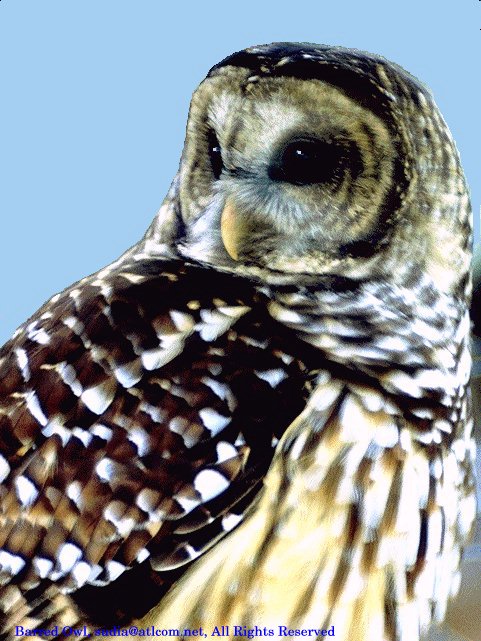
![]()
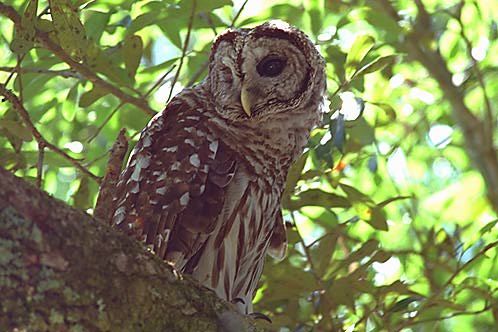
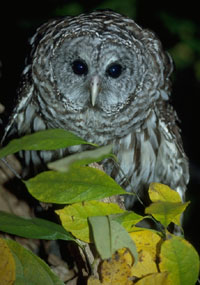
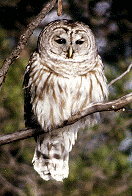
BARRED OWL
COMMON NAME: Barred Owl
SCIENTIFIC NAME: Strix varia
IDENTIFYING CHARACTERSITICS:
An all gray owl (although some individuals have a brown wash) streaked with white horizontal barring on the chest and vertical barring on the belly. It has a yellow beak, and no tufts on the head, and its brown eyes distinquish it from the Great Gray owl.
RANGE: Found in the U. S. and southern Canada east of the Rocky mountains, although it has been recently expanding its range westward. This is causing concern as it may compete with the endangered Spotted Owl.
HABITAT: A woodland owl, associated with flood plains, river bottoms and lake margins.
NESTING: A cavity nesting owl that will also nest in old crow or hawk nests or manmade structures.
FEEDING HABITS: Barred owls feed on a variety of prey, including rodents, squirrels, rabbits, birds, and crustaceans.
Barred Owls are generally docile, but can be very aggressive, and attack when least expected.
CONSERVATION STATUS: A very common species with no special status.
![]()
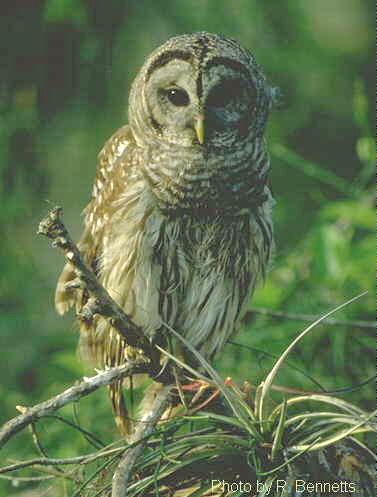
BARRED OWL
Strix varia
Class: Aves
Order: Strigngiformes
Family: Strigidae
Genus and Species: Strix varia
DESCRIPTION: Size 16-24 inches; wingspan 38-50 inches. A large gray-brown woodland owl with a puffy dome-shaped head and big liquid black eyes. Most striking feature is a ruff of feathers barred crosswise on upper chest. Has bold lengthwise streaks on rest of underparts. The amount and richness of brown in plumage increases from north to south. Palest birds in east-central anada and darkest in extreme south Mexico and Central America.
VOICE: Most vocal of all owls. Best known call is a group of four hoots each howWHO-haWHOO!...howWHO-haWHOOAaahh! Often represented as "Who-cooks-for-you? Who-cooks-for-you-all? Tonal quality is a unique blend of bark and hoot. Are capable of an amazing variety of wails, moans, cackles, hisses, laughs, and a long loud humanlike screams. Often call by day, especially before thunderstorms.
SIMILAR SPECIES: Very similar to the spotted owl that is darker and has white spots on head and back and also lacks contrast between barred breast and streaked belly. Great gray owl and first-year female snowy owl may be confused with pale northern barred owls.
RANGE: From British Columbia and Alberta east to central Quebec and Nova Scotia south throughout eastern United States to the Gulf Coast. Now moving into Washington, western Montana, Oregon, and northern California. Also in central and eastern Mexico, Guatemala, Honduras, and El Salvador.
HABITAT: Woodland swamps, dense forests, lakeshores, and river bottomlands. Found in mixed evergreen, and deciduous woodland. Especially numerous in cypress swamps of southeast.
NESTING: Cavities of trees and abandoned nests of crows, ravens, and hawks. Remarkable site fidelity one pair returned to the same nest for 33 years. Female usually lays 2 eggs and incubates them for 23 to 32 days. The eggs are laid any time from January to June.
MIGRATION: Sedentary (stay in the same area). Occasional massive displacement during very severe cold spells.
PREY: Many kinds of mice, woodrats, chipmunks, squirrels, opossums, shrews. Wide variety of insects, snakes, lizards, salamanders, crayfish, frogs, and occasionally wades in shallow water for fish. Also birds like quail, grouse, doves, jays, finches and are known to eat other owls and bats.
![]()
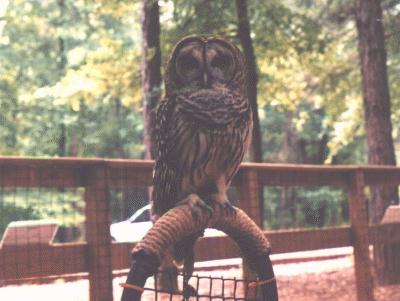
![]()
Back to Birds
 Wildflower
Seed For Sale
Wildflower
Seed For Sale